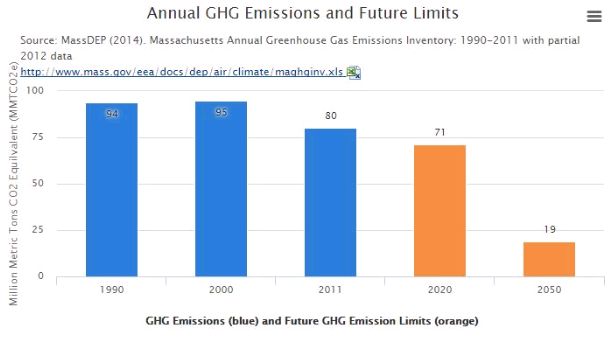The Baker Administration announced on July 9 that it filed a bill for sourcing long-term hydroelectric power in the Commonwealth. Hydroelectric power currently provides a small portion of electricity consumed in Massachusetts. According to the Energy Information Administration, it ranks behind natural-gas, nuclear, coal and other renewable energy sources.
The bill, titled "An Act Relative to energy sector compliance with the Global Warming Solutions Act," would require the State's electric distribution companies to solicit proposals for hydroelectric contracts spanning 15 to 25 years. Such solicitations would begin no later than April 1, 2016.
As indicated in the bill's title, the Administration would encourage the Commonwealth's distribution companies to source hydropower as a way of meeting the state's required greenhouse gas emission reductions under Global Warming Solutions Act. Signed into law by Governor Baker's predecessor Deval Patrick, the Global Warming Solutions Act requires the Massachusetts to reduce its greenhouse gas emissions 25% below 1990 levels by 2020. A 2014 report by the Massachusetts Department of Environmental Protection noted that emissions in the state had been reduced 15% from 1990 levels.

However, according to Baker's letter to the Massachusetts legislature accompanying the bill, without large hydropower procurement the state is at risk of failing to meet the 2020 goal.
Massachusetts has a renewable energy portfolio (RPS) standard that requires a certain amount of electricity generation each year to come from certain "Class I" generation units, including solar PV, wind, and small hydropower under 30 megawatts. By this year, 10% of electricity must come from Class I sources. Massachusetts's support of renewable energy through mechanisms like the RPS has made it a leading state for developing renewable energy projects.
The bill would require utilities to solicit up to 18,900,000 megawatt-hours of firm power through long-term contracts with either new Class I RPS sources firmed up by hydropower or hydroelectric generation alone. For instance, wind power generators could participate in the solicitation if the wind power was supported by hydropower. This would allow the wind and hydropower together to provide a guaranteed power supply to an electric distribution company, instead of providing intermittent power through wind alone.
Although not mentioned by name in the bill, it is expected that the power would come from large hydroelectric sources in Canada. Some are concerned that by allowing large-scale hydroelectric power access to the Massachusetts market, smaller-scale distributed generation projects, like the numerous solar PV projects that have dotted the Commonwealth since 2008, will be less attractive. Although the bill provides for direct solicitation of hydropower projects, it neither changes the classification of RPS Class I projects nor reduces the required power that must come from such Class I generation units. Were the bill to be amended to allow large-scale hydro to qualify as RPS Class I projects, its prospects for passage would be, at best, uncertain.
To view Foley Hoag's Law and the Environment Blog please click here
The content of this article is intended to provide a general guide to the subject matter. Specialist advice should be sought about your specific circumstances.

